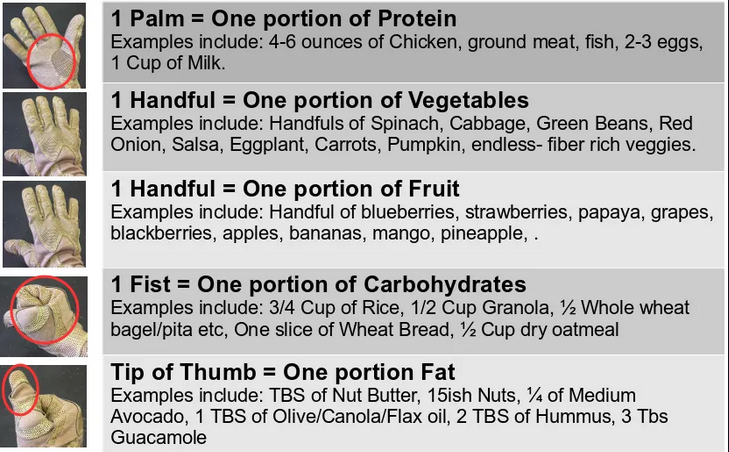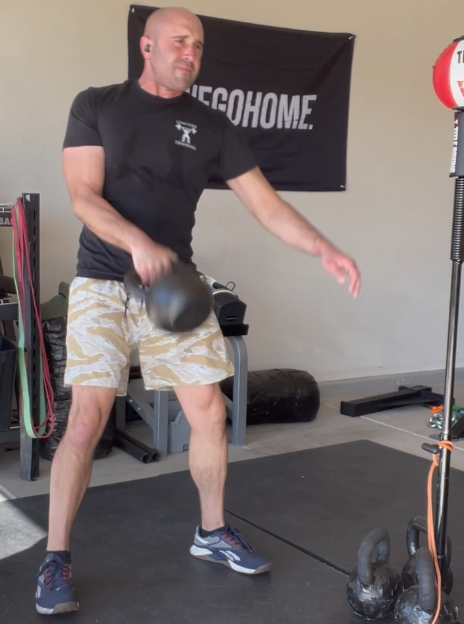Practical Application: Nutrition
How do busy first responders and tactical populations fuel their performance?
I’ve written on this topic before and it is easy to get mired in the details or caught up in fads when trying to eat a healthy diet. Like most things, there is a time and a place for almost all eating “systems.” Usually, as long as we stay within moderation most people can enjoy the foods they like while also supporting a healthy lifestyle.
Disclaimer: I have a Bachelor of Science Degree in Nutrition and Fitness... I am NOT a doctor. This is not medical advice. If you have a medical issue PLEASE consult your doctor before doing anything you read on the internet.
This article is on the practical application of basic nutrition concepts for tactical/first responder populations. We are going to stay extremely basic. Below is a starting point I use for people when “building their plate.”
This diagram is straight from my book:

This is a START, and not meant to be how everyone should eat all the time. This is A WAY to determine portion controls and build a balanced meal. Activity level, body composition, goals, etc- all dictate how much of each macro or food group you should be eating.
For example. If you’re crushing either our live Human Performance Program or one of our standalone programs, you might be in a great position for a few of your daily meals to have two palms size servings of protein, two-three fist size servings of carbohydrates, one-two thumb size servings of healthy fat, and really as many vegetables as you want. In this example, you could use whatever fat source you choose to cook your vegetables or any of your other food groups if you would like.
Again, this was a hypothetical. No two people are the same and you may need more or less of any of those food groups based off your goals and current body composition. Using your hand just makes it easy, and is a method that can be used anywhere without a scale or measuring cups.
When building your meal, I always recommend to start by choosing less processed food. A fast food hamburger is not the same as a homemade hamburger made with beef from a small local farm. Eating a baked potato vs eating fast food fries is just...different...we all know this...It is much harder to overeat baked potatoes than mass produced garbage.
Simple choices like this will go a long way over time. Below we explain a little deeper into why a balanced meal is important.
Macronutrients or “macros”
Protein
Building blocks of muscle, stored in muscle tissue. Made of amino acids- these acids vary by source. Chicken, steak, salmon, turkey- Not gas station beef jerky.
Sometimes when you’re on the go it can be challenging to get enough protein in, and supplementing can be a great option to hit your daily totals.
Carbohydrates
One of the body’s energy sources. Stored inside skeletal muscles and our liver as a glycogen, and in it’s simplest form is broken down into sugar for energy.
Carbohydrates are typically viewed as simple and complex.
Complex Examples: White/Brown Rice, Potatoes (really all kinds), oatmeal- Not Sugary cereal or potato chips.
Simple Examples: Sugar, candy, fruit (this varies on composition), processed carbohydrate
Vegetables- Eat more of them, and as many colors of them as possible. Within the context of buying vegetables in a store...by the time they’re harvested and transported...I am not even sure if you can call them fresh anymore. What I am saying is...just eat your vegetables. I don’t care if they’re canned or fresh. Frozen honestly might be the better option as you at least know they were probably frozen not long after they were taken off the farm. If you’re extremely pressed for time using a greens supplement can be a convenient way to get more veggies in.

Fruit: Same thing here, include it in your diet and various colors. Don’t go crazy with it, as it is still sugar and a bit more dense in calories. However, It is still really hard to overeat blueberries or bananas...your body just typically governs it better because naturally occurring fruit typically doesn’t hit you like a drug.
Fats
Stored in...you guessed it: fat. These are made up of fatty acids. There are essential and non essential fats, and the breakdown of these acids depend on what you’re ingesting. Not all fats are created equal. An easy way to incorporate some of these is by cooking with them. There are different kinds of fatty acids, and some are better than others. For simplicity, I am just going to tell you is to do your best to stay away from overly processed fats like certain seed oils and trans fats. The same advice applies from earlier- typically if you stay with naturally occurring fats you should be fine.
Examples of good options:
Olive Oil, Avocado Oil, Avocados
peanuts, walnuts, almonds- All of these and butter form are great as well
The fat in several types of fish (Omega 3’s)- Salmon is a great option.
Closing
This article is the practical application of building nutritional habits to support a healthy lifestyle and support performance. I am very much aware that for professions like first responders and tactical populations sometimes we have to work with what we have. There will be times you will have to eat less than ideal choices. Just understand, that if you choose the better option most of the time...you will be the better version of yourself. If for you, that means drinking coffee with a little cream vs the blended milkshake that contains coffee...start there. Chip away at your poor eating habits until they’re replaced with better ones.
It is one choice at a time.



